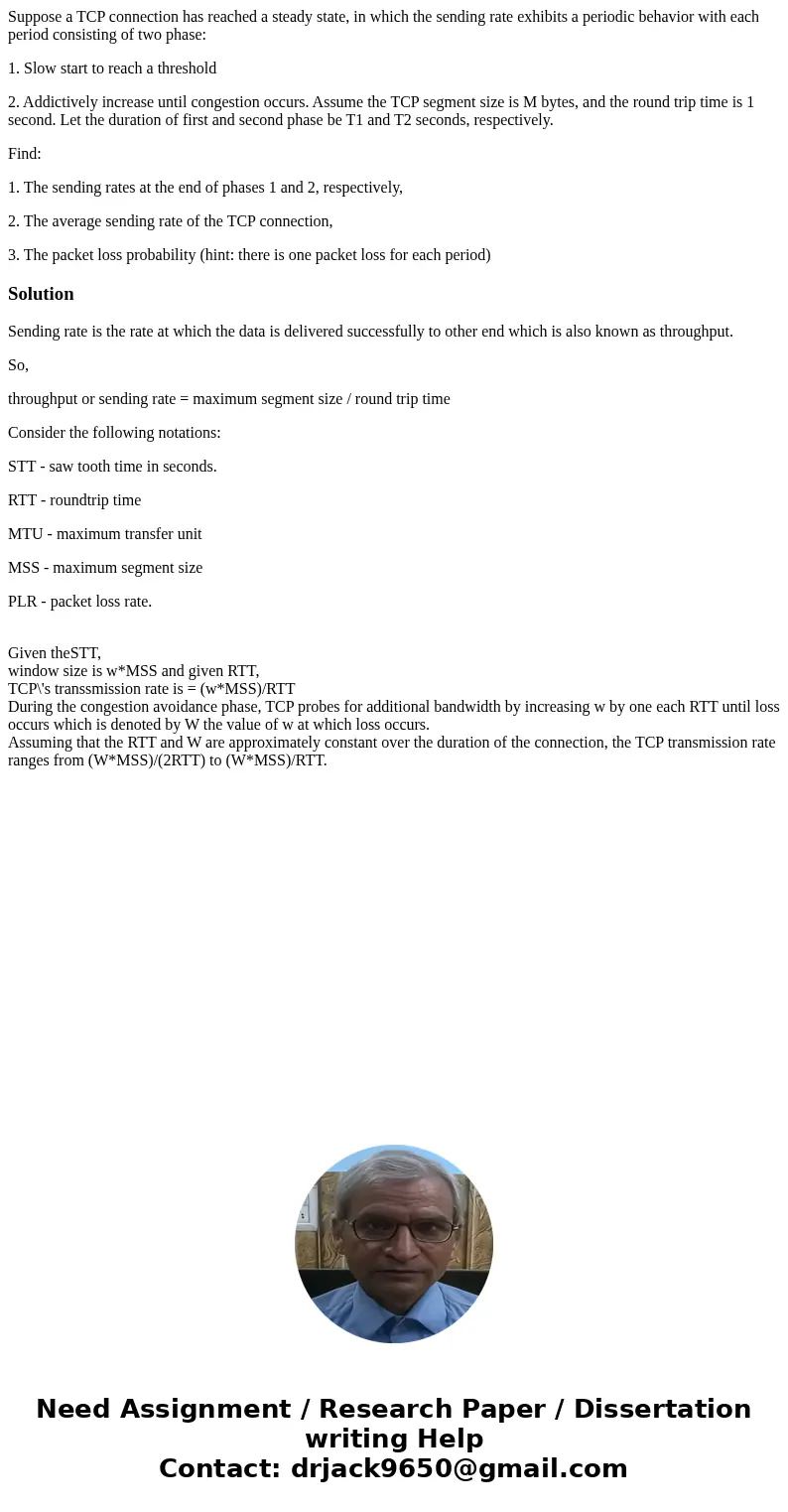Suppose a TCP connection has reached a steady state in which
Suppose a TCP connection has reached a steady state, in which the sending rate exhibits a periodic behavior with each period consisting of two phase:
1. Slow start to reach a threshold
2. Addictively increase until congestion occurs. Assume the TCP segment size is M bytes, and the round trip time is 1 second. Let the duration of first and second phase be T1 and T2 seconds, respectively.
Find:
1. The sending rates at the end of phases 1 and 2, respectively,
2. The average sending rate of the TCP connection,
3. The packet loss probability (hint: there is one packet loss for each period)
Solution
Sending rate is the rate at which the data is delivered successfully to other end which is also known as throughput.
So,
throughput or sending rate = maximum segment size / round trip time
Consider the following notations:
STT - saw tooth time in seconds.
RTT - roundtrip time
MTU - maximum transfer unit
MSS - maximum segment size
PLR - packet loss rate.
Given theSTT,
window size is w*MSS and given RTT,
TCP\'s transsmission rate is = (w*MSS)/RTT
During the congestion avoidance phase, TCP probes for additional bandwidth by increasing w by one each RTT until loss occurs which is denoted by W the value of w at which loss occurs.
Assuming that the RTT and W are approximately constant over the duration of the connection, the TCP transmission rate ranges from (W*MSS)/(2RTT) to (W*MSS)/RTT.

 Homework Sourse
Homework Sourse